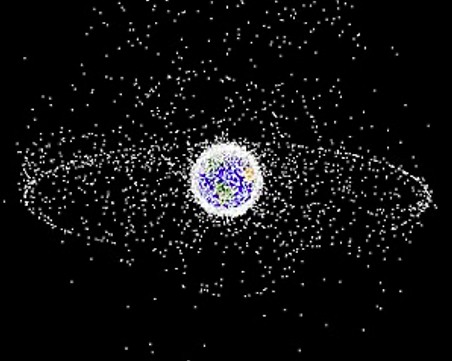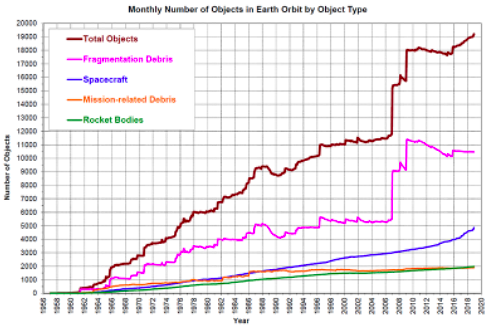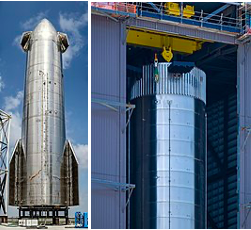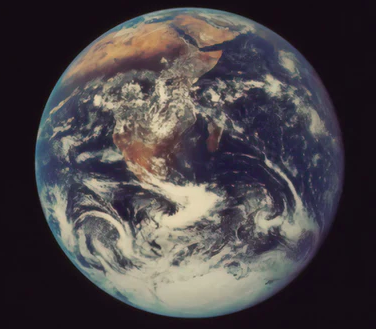はじめに
1978年に当時のKDDに入社して、茨城の高萩で新入社員研修を受けたときの夜、衛星推進派と光ケーブル推進派が将来の抱負を示しあった。それぞれ自分たちの技術が将来を築くと信じていた。当時はどちらかといえば、通信衛星が飛躍する時代だったが、その後現在までインターネットのバックボーンとして世界を支えているのは光ケーブルの技術革新であったと言える。そして、通信の分野でも衛星を専門とする技術者は徐々に減り、携帯やモバイルの方にシフトしていった。しかし、近年衛星によるグルーバルな事業展開が加速している。筆頭はイーロンマスクが推進するスペースXだ。TED-Edに衛星関連の動画があったので、視聴してみた。
もし衛星が突然無くなったら
衛星がもし突然消えて無くなったら現代社会はどうなるのだろう。衛星には通信衛星、放送衛星、位置測位のための衛星(GPS等)、軍事衛星などがある。この中で何より影響があるのはGPS衛星だろう。現代の社会を支えるインターネットはGPSからの情報で同期しているので、ネットに繋がっているあるとあらゆるシステムは動かないか、壊滅的な影響を受けるだろう。中国は北斗、ロシアはGLONASSを打ち上げているが、衛星が全部なくなる前提ではリスク分散にはならない。興味のある方はまずは視聴してほしい。
(出典:YouTube)
衛星に依存する社会のリスク
衛星が突然消えることは本当にあり得るのか。この動画では、2つの可能性について最後の方で説明している。一つは、太陽熱のために人工衛星や世界中の送電網が壊れるもの。磁気嵐のような影響もあり得るかもしれない。もう一つは衛星軌道での連鎖的な衝突だ。衛星軌道上には7,500トンもの宇宙船や廃棄された機器などが時速56,000kmの速度で地球を周回していて、小さなものでも大きな破壊力を持つ。宇宙空間で衝突が1回起きると数千の破片を生み出し、連鎖反応を引き起こすリスクがあると説明している。
スペースデブリの脅威
宇宙でのゴミをスペースデブリ(space debris)と読んでいる。海上のプラスチックゴミは海流の影響で特定の場所に集まる。衛星も同様に特定の場所に集まる。具体的には、いわゆる静止軌道(GEO)と呼ばれる地上3.6万kmの円周軌道だ。そして、もう一つが低軌道衛星でこれは地球の外側を包み込むように集まっている。下の図はコンピュータによるシミュレーション結果だ。

(出典:Space debris)
増大するスペースデブリ
宇宙船や宇宙ロケットの開発や打ち上げに伴って破片(Fragmentation debris)も増加している。特に2006年から2008年にかけて急増している。この解決のために、日本は欧米諸国ととものいスペースデブリの抑制など宇宙空間の長期利用に向けた取り組み声明をCOPUOS(国連宇宙空間平和利用委員会)で発表した(参考)。

(出典:Space debris)
スペースxの構想
衛星を用いた事業化構想は、以前からあった。例えばイリジウム構想では低軌道に77個の衛星を配備して、地球のどこからでも通話できる構想だ。しかし、2009年2月10日にイリジウム33号がロシアの軍事衛星コスモス2251号と衝突し、500個以上のスペースデブリを発生させた。一方、イーロン・マスクが主導するスペースXは18日は、2019年11月から今までに1740基の衛星を打ち上げ、世界12カ国の約9万人の利用者に月額99ドルで試験提供している。スペースXでは第2世代システムとして、再使用型ロケットシステム「スターシップ」を利用して約3万基の衛星を高度340〜614kmに配備する計画を検討中だが、NASAなどはスペースデブリへの影響などを考慮して懸念を表明していることが数日前に報道されている(参考)。

(出典:スペースxスターシップ)
まとめ
通常、低軌道(LEO)衛星というと地球表面から高度2,000km以下を指すが、イーロンマスクが3万基を配備する衛星軌道は340kmから614kmとさらに低い軌道だ。そこに初期1.2万基、追加3万基も配備すれば、地上のあらゆるところで通信が可能となるというメリットはあるけど、打ち上げコストや運用コストだけではなく、不要となった衛星やデブリの回収・廃棄コストは含まれているのだろうか。プラスチックゴミの問題のように、製造コストは考えるけど、海洋に投棄されたゴミの回収コストは誰が負担するのか。衛星と衛星が衝突して、その破片でさらに衝突が起きるという衝突の連鎖が発生すれば、冒頭の動画が現実のものとなる。スペースデブリの問題は深刻であり、かつ重要だ。
以上
最後まで読んで頂きありがとうございました。
拝
参考:英文スクリプト
One day, without warning or apparent cause, all of humanity’s artificial satellites suddenly disappear.The first to understand the situation are a handful of government and commercial operators. But well before they have time to process what was happened, millions sitting on their couches become aware that something is amiss. TV that is broadcast from or routed through satellites dominate the market for international programming as well as some local channels, so the disappearance causes immediate disruptions, worldwide. The next people affected are those traveling by air, sea, or land, as global positioning, navigation and timing services, have entirely ceased. Pilots, captains, and drivers have to determine their locations using analog instruments and maps. Aircraft, ships, and ground vehicles get stopped, grounded, or returned to port. In the meantime, air traffic controllers have a difficult task on their hands to prevent plane crashes.
Within hours, most of the planet’s traffic grinds to a halt. The effects are not limited to entertainment and travel. All sorts of machines, from heating and cooling systems to assembly lines, rely on super-accurate satellite-based timing systems, and many have little-to-no backup options. Stoplights and other traffic control systems stop synchronizing, so police and good Samaritans step in to direct the remaining cars and prevent as many accidents as possible. The most catastrophic impact is yet to come. Because in the next few hours, the world economy shuts down. Satellite-based timestamps play a critical part i everything from credit card readers and stock exchanges to the systems that keep track of transactions.
People are unable to withdraw cash or make electronic payments. Logistics and supply chains for the crucial goods like food and medicine fragment. Leaving people to survive on whatever is locally available. Most counties declare a state of emergency and call on the military to restore order. That may take quite a while. Most navigation and communication systems are no longer operational, so military chains of command may be in disarray. Many troops, including those actively deployed, are left to their own devices. Commanders of nuclear submarines and missile centers.Wonder if the disruption is the result of a hostile attack. What sorts of decisions do they make with partial information?
Even in the best-case scenario, our civilization gets set back by decades at the very least. That is because, despite being a relatively new phenomenon, satellites have quickly replaced more traditional long range technologies. satellites have quickly replaced more traditional long range technologies. The combination of global positioning and internet has allowed for near-instant signals that can be synchronized worldwide. Many systems we use daily have been built upon this foundation. Going back to the communication systems of the mid-20th century would not be a simple matter. In many cases, they had have to be rebuilt from the ground up. While the sudden disappearance in this thought experiential is unlikely, there are two very real scenarios that could lead to the same results.
The first is a solar fare so strong it fries satellite circuity as well as many other devices and power grids around the wold. And the second is an orbital chain reaction of collisions. With about 7,500 metric tons of defunct spacecraft, spent boosters, and discarded equipment orbiting our planet at relative speeds up to 56,000 kilometers per hour, even small objects can be highly destructive. A single collision in space could create thousands of new pieces of debris, leading to a chain reaction. Space is huge, but many of the thousands of satellites currently in orbit, share the same orbital highways for their specific purposes. And since most objects sent to space are not designed with disposal in mind, these highways only become more congested over time.
The good news is, we can protect ourselves by studying our solar system, creating backup options for our satellite networks, and cooperating to avoid an orbital tragedy of the commons. The space kilometers above our heads is like our forests, the ocean’s biodiversity and clean air:If we do not treat it as a finite resource, we may wake up one day to find we no longer have it at all.



